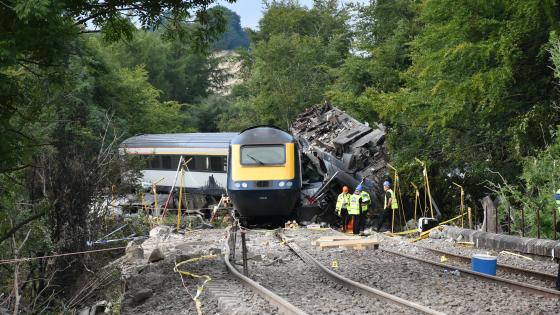
Although RAIB’s investigation into the Carmont derailment found the Mk 3 coaches on the HST generally performed well in the crash, corrosion was found in the end pillars of the leading coach, and the inter-vehicle couplers were unable to withstand the forces in the derailment, allowing the coaches to scatter and roll over rather than staying broadly vertical and in line.
The lack of vertical bogie retention also contributed to the accident, freeing coaches to slide and roll uncontrollably rather than slowing more gently had the bogies dug into the ballast. The bogies became obstacles, and it is thought the second coach suffered penetration damage as a result of hitting them.
Recommendations are made to owners of Mk 3s and other vehicles susceptible to ‘significant’ levels of corrosion to ensure there are clear criteria for allowable levels of corrosion in safety critical areas, with maintenance and overhaul procedures amended if needed.
